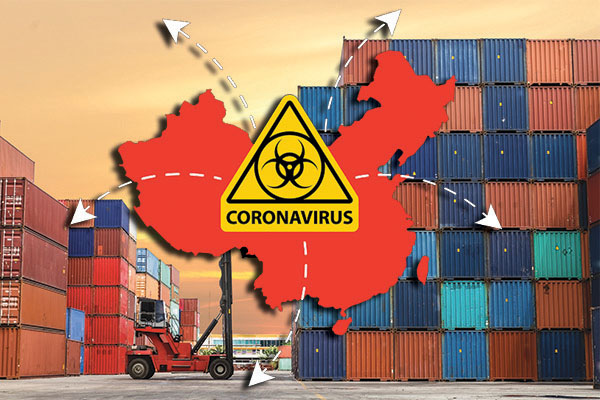Mineta Transportation Institute Examines COVID-19 impact on California’s logistics networks
MTI researchers highlight the need for policymakers to prepare for future shortfall

California could lose up to $20 billion in transportation revenue over the next 10 years following the COVID-19 pandemic, according to new research released by the Mineta Transportation Institute(MTI).
In a new report—The Impact of COVID-19 on California Transportation Revenue— MTI researcher Asha Weinstein Agrawal and UCLA researchers Hannah King and Martin Wachs projected how much revenue will be generated over the next decade by the state taxes on fuel purchases and fees on vehicle ownership. COVID-19 has already reduced those revenues substantially because Californians are driving less and therefore buying less fuel.
Projected total revenue varied across different economic recovery scenarios tested. “Under a worst-case scenario, a slow economic recovery could cause California to receive 17% less revenue through 2030 than the state would have received without COVID-19,” explains Agrawal, the director of MTI’s National Transportation Finance Center. “The projected revenue for the slow-recovery scenario is $98 billion, compared to a projected $118 had COVID-19 not occurred.”
The study finds that state policy choices could counteract projected revenues shortfalls. King explains that “one hypothetical recovery scenario we tested could generate $121 billion, a 3% revenue gain compared to revenue had COVID-19 not struck.” This scenario assumed a swift and complete economic recovery coupled with policies to encourage Californians to purchase electric vehicles.
“California policymakers are hastily planning for a future with less-than-anticipated revenue,” said Wachs, a Professor Emeritus of Urban Planning at UCLA and researcher at its Institute of Transportation Studies. “The scenarios in this study are not predictions of what will happen, but with so much uncertainty about the future they help policymakers ask important ‘what if’ questions.”
The study looked just at transportation revenue collected by the state, a package of taxes and fees established by Senate Bill 1in 2017. These are gasoline and diesel fuel taxes, an annual fee on vehicles with the rate based on vehicle value, and an annual fee for zero-emission vehicles (ZEVs).
In addition to these state-generated revenues, transportation funds in California are also raised locally through transit fares, tolls, sales taxes, and property taxes. California also receives federal funding that will be important to a transportation program recovery.
In a webcast joined by Logistics Management, Agrawal explained how shortfalls in state transportation revenue would influence drivers.
“Revenue shortfalls will likely result in both reduced maintenance and delayed capital investments. Drivers will have to wait longer for planned improvements like replacing outdated bridges and rehabilitating freeways,” he added
The researchers constructed five recovery scenarios based on transportation-specific variables that are most likely to be affected by COVID-19, including fuel consumption, the number of registered petroleum-powered and electric vehicles, and the price of cars.
They projected potential revenue exploring possible government policies to stimulate the market, like tax credits to incentivize new vehicle purchases. The five recovery scenarios that were compared with a baseline of what was expected before the COVID-19 emergency, are 1) slow, 2) moderate, 3) moderate with a stagnated vehicle market, 4) moderate with an electric-vehicle stimulus, and 5) fast with an electric-vehicle stimulus.

Article Topics
Latest in Logistics
LM Podcast Series: Assessing the freight transportation and logistics markets with Tom Nightingale, AFS Logistics Investor expectations continue to influence supply chain decision-making The Next Big Steps in Supply Chain Digitalization Under-21 driver pilot program a bust with fleets as FMCSA seeks changes Diesel back over $4 a gallon; Mideast tensions, other worries cited Four U.S. railroads file challenges against FRA’s two-person crew mandate, says report XPO opens up three new services acquired through auction of Yellow’s properties and assets More LogisticsAbout the Author
Subscribe to Logistics Management Magazine

Find out what the world's most innovative companies are doing to improve productivity in their plants and distribution centers.
Start your FREE subscription today.
April 2023 Logistics Management

Latest Resources














